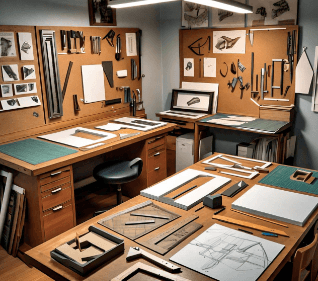Introduction
Building scale models can be a rewarding and enjoyable hobby, whether you’re creating intricate aircraft, detailed vehicles, or stunning landmarks. To get started, it’s important to know what tools you’ll need to ensure a successful modeling experience. This guide outlines essential tools, tips, and best practices for both beginners and seasoned model builders.
1. Essential Tools for Scale Modeling
You don’t need a lot of space or fancy equipment to start building scale models. Most essential tools can easily fit on a small workspace, like a TV tray or a desktop. Here’s a list of tools you’ll need:
- Hobby Knife: A sharp knife is essential for cutting parts from the sprue, trimming edges, and making precise cuts.
- Scissors: Regular gardening scissors can be used for cutting larger parts and cleanup.
- Cutters: Use side cutters to carefully cut parts from the sprue without twisting them, ensuring minimal damage to the parts.
- Tweezers: These are invaluable for handling small pieces and applying precise placement during assembly.
- Sandpaper: Various grades are necessary for smoothing rough edges and removing mold lines from parts before assembly.
- Glue Options:
- White Glue: Ideal for clear parts where strong bonding isn’t critical.
- Super Glue: A fast-acting adhesive for quick bonds.
- Super Glue Booster and Debonder: Helpful for accelerating the curing process and for removing unwanted glue.
- Liquid Styrene Cement: Preferred for model assembly; it melts plastic surfaces for a strong bond.
- Putty: Used to fill seams and imperfections, ensuring a clean finish.
- Brushes: A variety of brushes (small and large) for applying glue and paint.
- Grinding Sticks and Files: Useful for finishing edges, smoothing surfaces, and tidying up detailed areas.
- Paint Set: A basic collection of paints to bring your model to life with colors and finishes.
- Respiratory Mask: Protect your lungs when working with paints and solvents, especially in poorly ventilated areas.
- Miscellaneous Supplies: Insulation tape, toothpicks, clothespins, rubber bands, and a diluent for paint thinning.
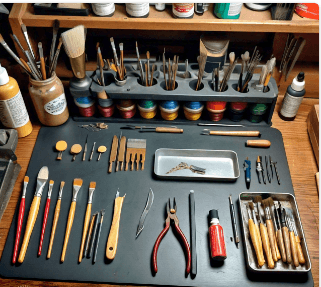
2. Setting Up Your Workspace
Ensure that you have a well-ventilated area for modeling, especially when using adhesives and spray paint. Adequate ventilation will help reduce the inhalation of harmful fumes.
- Flat Surface: Use a stable, flat surface for building your model where you can easily access all your tools.
- Safe Storage: Keep your tools organized in a way that’s easy to access but safe from spills or accidents.
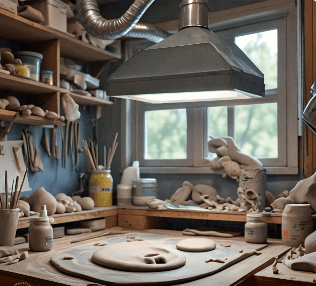
3. Basic Modeling Techniques
Before diving into more advanced techniques, familiarize yourself with the following basic modeling practices:
- Part Cutting: Use precision to cut parts from the sprue. Cut as close as possible, being careful not to damage the part itself.
- Cleaning Mold Lines: After cutting, use sandpaper or a file to smooth out any flaws or leftover material on the parts. This step is crucial to achieving a clean and polished look.
- Gluing Techniques: For best results with liquid styrene cement, use a fine brush to apply a thin layer of glue to the seams. Capillary action will help draw the glue into the joint, creating a firm bond.
- Adjustment Opportunity: If you happen to misalign parts after gluing, adding a small amount of additional liquid cement can often allow you to separate the pieces for realignment.
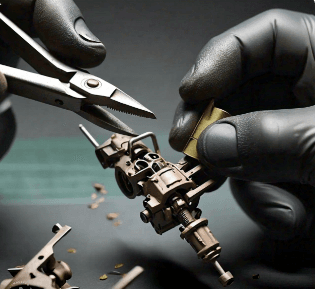
4. Painting Your Models
Painting is where you can truly personalize your scale models. While airbrushing is preferred by many experienced modelers for precision, you can achieve great results with spray paint as well.
- Surface Preparation: Ensure that the model is clean and free from dust or grease before applying paint.
- Layering Techniques: Apply multiple light coats instead of one heavy coat for a smoother finish. Always allow adequate drying time between coats.
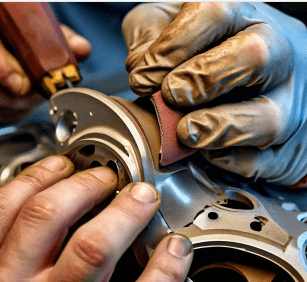
5. Choosing Your First Model
As a beginner, it’s advisable to start with a simpler kit. Most manufacturers label kits by skill level, helping you choose one that aligns with your experience.
- Researching Kits: Consider browsing model building magazines or resources like FineScale Modeler to get insights on different models and recommended experience levels. This will help you select a project that is manageable yet rewarding.
Conclusion
Building scale models requires a blend of creativity, patience, and the right tools. By starting with the essential tools and techniques outlined above, you can create impressive models that reflect your efforts and skills. Remember, every model you build is an opportunity to improve and explore new methods, so enjoy the journey of creating your miniature masterpieces!

